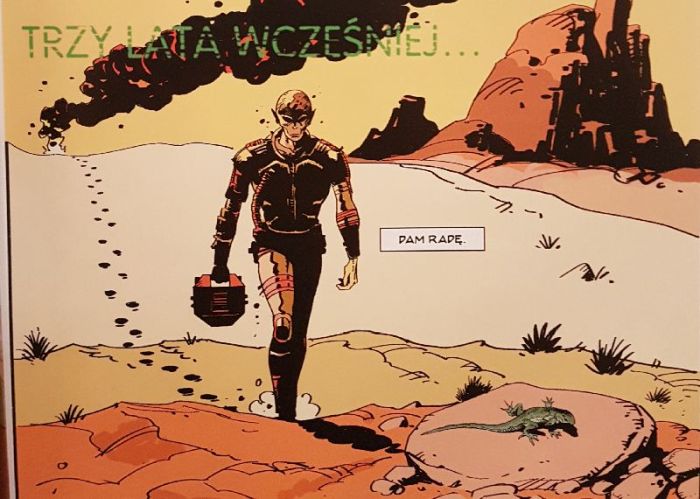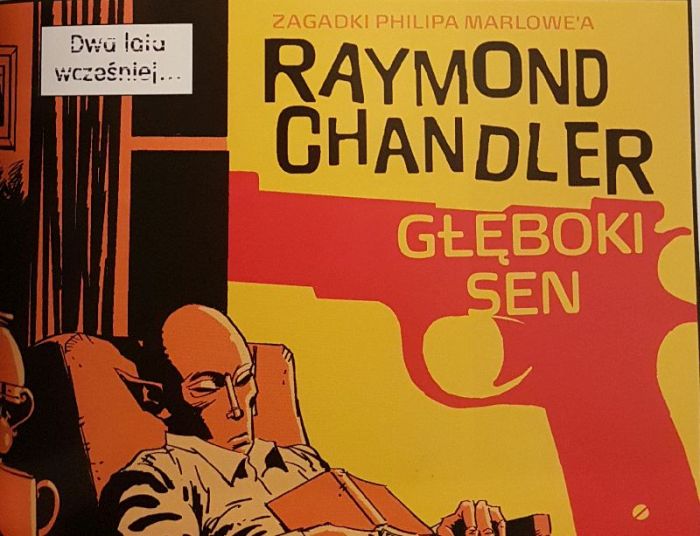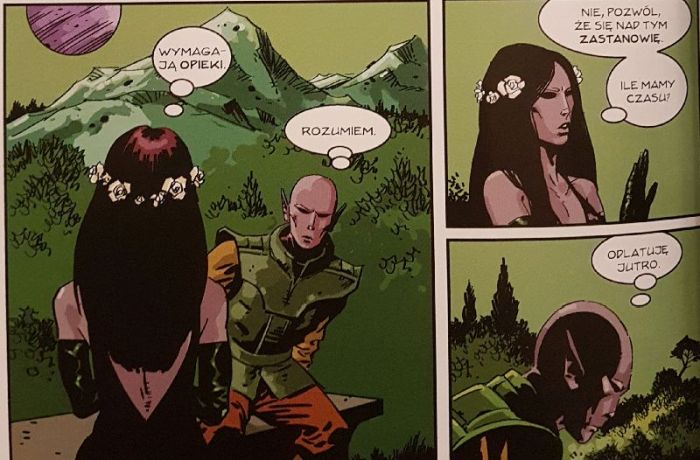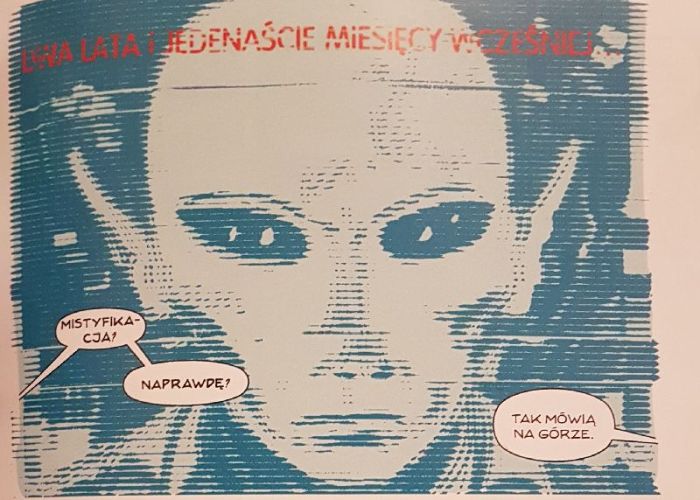Typically aliens get to Earth for research purposes ( ET ) , to warn people of the danger ( The Day the Earth Stood Still ) or by invading ( Independence Day ). Resident Alien by Peter Hogan and Steve Parkhouse brings a different, more unusual activity. The title alien deals with our planet ... solving criminal riddles in a small town.
Pop culture loves detectives. It was commonly assumed that the first detective work was the Assassination on Rue Morgue by Edgar Allan Poe. Soon, other fictional masters of deduction, such as Sherlock Holmes and Hercule Poirot, followed in the footsteps of C. August Dupin created there. But with time, with the multitude of subsequent titles, the intellect alone was no longer sufficient and the formula began to be differentiated, among others, by adding fantastic elements. Starting with Batman, who thanks to his intellect and gadgets (and money!) Gained the title of “the greatest detective in the world”. There are also some less mainstream examples. In Chew, the main character is a “cybopath” , that is , a person who learns the past of the object after eating it. Similarly iniZombie, only there the title undead had to eat the brains of the recently deceased.

UFO stop
The main character of Resident Alienis representative of the above-mentioned trend. Well, the title alien is shot down during a research mission to Earth. For fear of capture, he stays on the outskirts of a small American town, where he manages to lead a “normal” life with minimal human contact. The protagonist hides his “strangeness” with the help of psychic abilities, thanks to which he is perceived by others as Harry Vanderspiegel, a Dutch doctor. The situation changes when a local doctor dies under mysterious circumstances. Harry, despite some doubts (Earthlings fascinate the alien, and the three-year isolation was a result of coercion rather than will), decides to take his place and solve the mystery of local murders. However, getting out of the shadows is so dangerous that government agencies want to capture the survivor.
The plot of Resident Alien can be broken down into three layers. The first is a small-town life (Dawid Podsiadło likes it). Patience is a small town in Washington state, where residents lead a relatively quiet life – much closer to the Alaska Stop than to Twin Peaks Town. However, here too a crime takes place, which is the second component. The criminal puzzles that Harry solves (who additionally has the power to recognize truth and lies) also have a more intimate dimension. This is not CSI: Patience,there are no complicated intrigues here. I like the more minimalistic and socially oriented approach taken by screenwriter Peter Hogan, although at the same time none of the three plots in the first volume is particularly revealing. Fans of crime fiction who like to solve puzzles on their own as the pages pass, have a taste for here. The reader learns the solution to the mystery the moment Harry does it. Finally, the third element of the plot is the investigation of the local “guys in black”, but this aspect was treated in the most clichéd way. Any limitations of known patterns are missing (so far?). All the above-mentioned components are nice, but I have the impression that each of them could have been done better.

The stranger
Although the plot is sometimes not demanding, Hogan managed to create an interesting character of the main character. Harry is not superior to people, he is fascinated by them, but in a warm way. He’s willing to risk his safety to help strangers (hehe). However, I have the impression that the screenwriter has gone too far by “humanizing” the alien. Although the main character comes from a different planet, we do not see any problems with acclimatizing to Earth. Harry does crossword puzzles, has lunch with his friends, reads detective stories – apart from his cosmic origins, he does not differ much in character from the average person. It is a pity that Hogan did not try to introduce even minimal themes à la fish out of water.
The other heroes are not that interesting anymore. Nurse Asta, a native of America, plays the most important role here. However, I must admit that endowing her with mystical powers (traveling in dreams) is a very standard solution. If any other characters had such abilities, I could have bought it as part of the pictorial world. In its present form, the reader simply receives a stereotype that has been reproduced for years. An equally lazy solution is to show Harry’s partner from his home planet. Yes, the main character himself is a humanoid in a very classic version – he differs from the Earthlings only with pointy ears, black eyes and purple skin color. It was as if someone had pulled him out of the Star Trek universe. Unfortunately, the opposite sex of this breed has long hair and breasts, which is a very sad manifestation of a lack of creativity.

Down-to-earth drawings
The graphic layer, for which Steve Parkhouse is responsible entirely (drawings, ink and colors), did not appeal to me. It fulfills its basic task, which is to present the plot clearly. And that’s it. Cropping is very standard, a more creative approach is missing here. Even scenes located on another planet or in a dream (which differs from reality only in different colors) are drawn in the same way. The characters are also drawn on average, although I must admit that I really like the procedure in which the reader constantly follows Harry’s fate in his original skin, without showing us the illusion that other characters see.

Residence
Resident Alien has been screened by the series with Harry played by Alan Tudyk, a phenomenal character actor. Although I was not able to get acquainted with the production, I am very happy about this fact, because the story from Hogan’s comic book can perfectly work in this form and fix some shortcomings that I complain about in the case of the source material. Nevertheless, I recommend the comic and look forward to its continuation.

